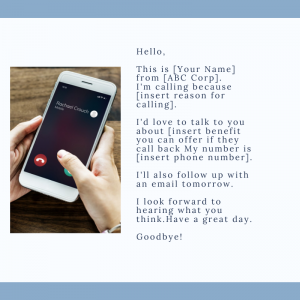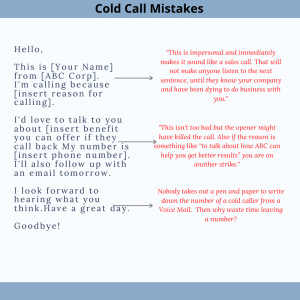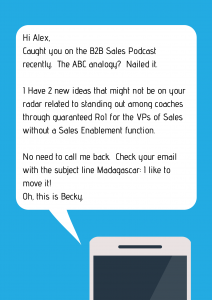Master Effective Cold Calling Tips and Techniques in 2021
– Some great openers that work
– How to play ping pong on a cold call
– How to make gatekeepers allies not enemies
– How to overcome the most common & dreaded objection “not interested.”
– Inspirational examples from pop culture 😉
Download Ebook: Winning Strategies That Help Close The Sale, From Top 18 Sales Leaders
Cold calling is the most used tool that comes to the aid of a salesperson. However it is also something that most salespeople dread about. In this article I will focus on the cold calling tips that you can use to master the art of persuasion. These cold calling tips are also very actionable. Read on to find more.
What is Cold Calling in Sales?
I would define it as “when you call someone without an appointment, and they don’t already know you”. There are three types of cold calls according to me:
Cold-cold
Never interacted with the person before and the phone call is your first touchpoint with them
Warm-cold
Reached out to them through other channels and you aren’t sure whether or not they know you
Hot-cold
Have exchanged messages or interacted before over email/social media etc.
How Do You Start A Cold call?
The one thing common across the different types of cold calls is that the person picking up the phone isn’t expecting to speak with you.
The only objective of your opening line should be to get to your second line. Though the first line can vary, honestly the sole purpose of that line should be to – make the person not slam the phone on you.
Now, this might vary depending on the type of person you sell to. While there is much generic advice, the underlying principle is “pattern interrupt”- say the unexpected so that they don’t have a chance to slam the phone till they have also said something and now feel more obliged to be polite.
Here are some successful and effective Sales openers
Sales Opener Example 1
‘Hey Alex, how have you been?’
– it works because it takes a friendly and familiar tone. That’s not the usual tone of sales calls, and that’s a pattern interrupt.
‘Thank you for taking my call.’
‘Hey Alex, I know I called you in the middle of something. And thank you for taking my call.’
‘Hey Alex, I know I called you in the middle of something but do you have 27 seconds to hear why I am calling?’
If someone knows that it will be over quickly, you are more open to entertain it. Think about how a doctor prepped you ahead of a problematic and painful exam.
Sales Opener Example 2
‘Hey Alex, it is Becky here from ABC. Maybe you can help me out for a moment.’
It works because our most primal instinct is to be able to help.
‘Hey Alex, Becky here. Can you help me out for a moment?
Alex: It depends
Becky: Absolutely, you got a quick sec.. is now a good time to talk?
I saw this recently on LinkedIn, and it captures all of the above principles – pattern interrupt, make them say yes, get the commitment.
“I know we haven’t spoken before. Can I tell you quickly why I’m calling, and then you let me know if we should keep on talking..s that cool?”
In their head, they are saying, “oh, this is going to be quick, and after it, I can tell them to kick rocks.” So they say, Yeah sure.
You then go for pattern interrupt # 2, “Are you sure, you sound busy?”
How to pitch in voicemails?
Here is what a typical VoiceMail message looks like:

Now, what’s wrong with this?

So here is what you can do instead:
For context, imagine I sell a sales-tech tool that can make sales coaching and sales training 100X effective. (it’s true ;))
 Source: I adapted this from @Josh Braun
Source: I adapted this from @Josh Braun
Here is why this VoiceMail message works
Relevance:
Start with their favourite topic and make it sound like this isn’t 1 out of 500 calls you are making that day. Make them feel special.
New idea:
I offered them value – 2 fresh ideas that might help in something significant to them. I might not have credibility with them yet, but this is a step in that direction of being consultative rather than sales-y.
Pattern interrupt:
I left it hanging. No phone number. No company name.
The voicemail’s job is to promote the email. I mentioned the subject line and made it different so they will remember it and open it.
10 Best Practices & Tips for Cold Calling
Cold Calling Tip #1: Experience for empathy
The easiest way to get sales reps to develop empathy is to make them experience things as a buyer. If possible, get them to man the office phone and screen all incoming cold-calls. It will do two things:
a. They will know how it feels to get interrupted.
b. What message worked even as they were getting interrupted.
At least they will avoid this experience from my favourite TV show Seinfeld –
Cold Calling Tip #2: Mix n Match
Use multiple channels in parallel – Social, Email and Phone. People have different levels of clutter, channel preference and communication styles. By mixing and matching, you can ‘meet’ them where they are most available.
Cold Calling Tip #3: Get a rhythm
Allocate an hour to cold call, so you are in the groove for it. Spend the first 10-15 mins preparing your mindset for it, grab your bottle of water, pep yourself up and do a few practice pitches, e.g. gatekeeper, voicemail and ACTUAL conversation.
Cold Calling Tip #4: Whom do you call
John Barrows mentioned the problem with lists in his recent Webinar – they have many very different people on it.
Make a list of people for that cold calling hour, who are similar. So you don’t have to redo your script each time you pick up the phone.
You will sound more confident and relaxed if exactly you know what it is that you want to say to that very person.
If you are selling an expense management solution, aim to call CFOs of <50 person companies in the education space in one day.
Guess what, it will be much easier to have your talking points, case studies, openers on your fingertips.
Cold Calling Tip #5: Reverse the goal
A no <> failure. A lot of young reps go into a cold calling with that mindset. The best cold-callers I know go in with the mindset that it is a game of numbers and every no gets me one call closer to a ‘Yes’.
Cold Calling Tip #6. Ask for feedback
It can come from peers, managers, family members or even the prospect! After a failed cold call, an SDR on my team reached out to the prospect to ask for feedback.
The prospect was beneficial and mentioned what he would have liked to hear instead. It is always easier if you can get that kind of a valuable gem from your target audience.
Perhaps when you are killing time at the next conference, walk up to a possible prospect and ask them about the last cold call they received and how and why they responded to it like that.
Cold Calling Tip #7: Learn the vernacular
People in different industries and roles use different languages (I don’t mean English, Spanish, etc.).
What you want to do is match their style in complexity, formalness, pace and structure. It helps them feel you understand them, you do business with others like them and has a significant impact in assisting them to open up.
One of our customers discovered through Wingman that the words they choose to set up a demo impacted the no-show rates for demos by as much as 50%! It is perhaps the strongest reason to have a script and follow it.
Cold Calling Tip #8: Turn Blockers into Stepping Stones
Based on analysis of 1000s of calls across Wingman’s customers, we know that in one out of every six calls, you will encounter the dreaded “not interested” objection.
Most sales reps give up and end the conversation with a polite thank you at this stage.
It is your opportunity to shine and distinguish yourself from the pack. You can read more about the exact script to handle this here.
Cold Calling Tip #9: What’s your downside?
It took me a long time to learn that being polite and business-like is the norm. But that doesn’t get me any farther in helping close deals or move things to the next step.
It is good to challenge, dig and push-back a little. If someone says “We don’t need this right now, but I will reach back out when we do” what is your best response?
You could politely say “That’ll be great, here is my number”, or you could push back and call a spade a spade. “Thanks, Amy.
Typically, when someone says they will get back to me on a cold call, it means they aren’t interested.”
You can then follow it up with how you would address the ‘not interested’ objection.
Cold Calling Tip #10: Handling Gate-keepers
A majority of phone lists are board line numbers.
So, whether or not you like it, the person picking the phone is more likely to be a gatekeeper than your prospect.
What’s the best way to deal with gatekeepers? I think this deserves a post of its own but here is a quick tip: “they are humans too”.
Below is a post from Amy Quick from the perspective of a gatekeeper that sums it well.
![]()
Some interesting stats:
Dials → Conversations: 3-5%
Conversations → Meetings booked: ~10%
Duration of successful calls:
Talk: Listen ratio of successful calls:
These stats can vary dramatically by segment. E.g. when selling to real estate agents, educational institutes or local businesses, you would expect a much higher number.
When selling to tech companies, these numbers can be even lower. It is possible that cold-calling isn’t ideal for your segment, but don’t make that decision till you have made at least a 1,000 dials!
Get jazzed up about cold calling, watch some game-tape of the best cold calls in your team.
If you need some help on that and learning best practices from sales reps in your organisation, check out www.trywingman.com. And here is my favourite cold-call from the movies:



